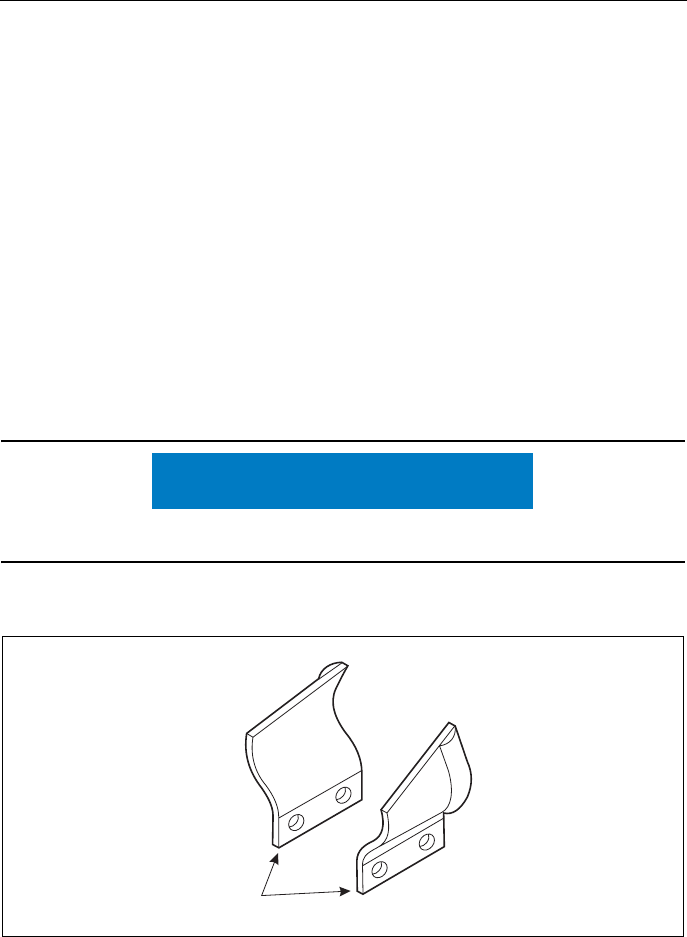
4-27
Routine Service and Maintenance
Chain Configuration
You can set up the chain in different configurations, depending on the width of the trench
desired and the soil conditions at the work site. Depending on the size of boom you purchased,
you will either have a chain with:
• 24 links (24 inch [60.9 cm] boom)
• 32 links (36 inch [91.4 cm] boom)
Each link can have digging teeth fastened to it and are referred to as a station. At any station,
the teeth can be fastened in various configurations with spacers and tubes to vary the width of
cut. The station configurations are placed along the chain in an order that maximizes digging
efficiency.
There are two types of teeth, cupped and triangular rock teeth. Cupped teeth are designed to cut
through and remove soil. Triangular rock teeth cut rock and other hard ground. The teeth are
cupped or angled differently depending on which side of the chain they are intended to be
fastened (i.e., either left or right). The teeth are fastened to the chain links using bolts, nuts,
tubes, and spacers of varying sizes. Figure 4–23 illustrates the various components of several
tooth configurations.
The table on the following page lists some of the chain configurations, detailing which tooth
configuration should be installed at each station around the chain for each chain configuration.
Each table lists the configurations for 32 positions. If you are changing the configuration of a
24 link chain, ignore the positions 25 through 32 in the tables.
• Make sure to orient the tooth in the proper direction. Figure 4–23 shows the rear of the
tooth. If the tooth is installed backwards, the trencher chain will not work properly.
Figure 4–23 Tooth Direction
NOTICE
Rear
2300


















